HVAC Replacement Near Me – A Complete Guide
Introduction
When your heating and cooling system starts showing signs of inefficiency, frequent breakdowns, or rising energy bills, it might be time for an HVAC replacement. An outdated HVAC unit can lead to uncomfortable indoor temperatures, higher maintenance costs, and increased energy consumption.
Finding a reliable local HVAC replacement service is crucial to ensure a smooth installation process, professional expertise, and a system that meets your home’s heating and cooling needs efficiently. A new HVAC system enhances indoor air quality, lowers utility bills, and provides consistent comfort throughout the year.
Key Factors to Consider Before HVAC Replacement:
- Energy Efficiency: Newer models offer higher SEER ratings, reducing energy costs.
- Cost Consideration: Installation costs depend on the unit type, home size, and labor fees.
- Professional Installation: Hiring a certified technician ensures proper setup, extending the lifespan of your system.
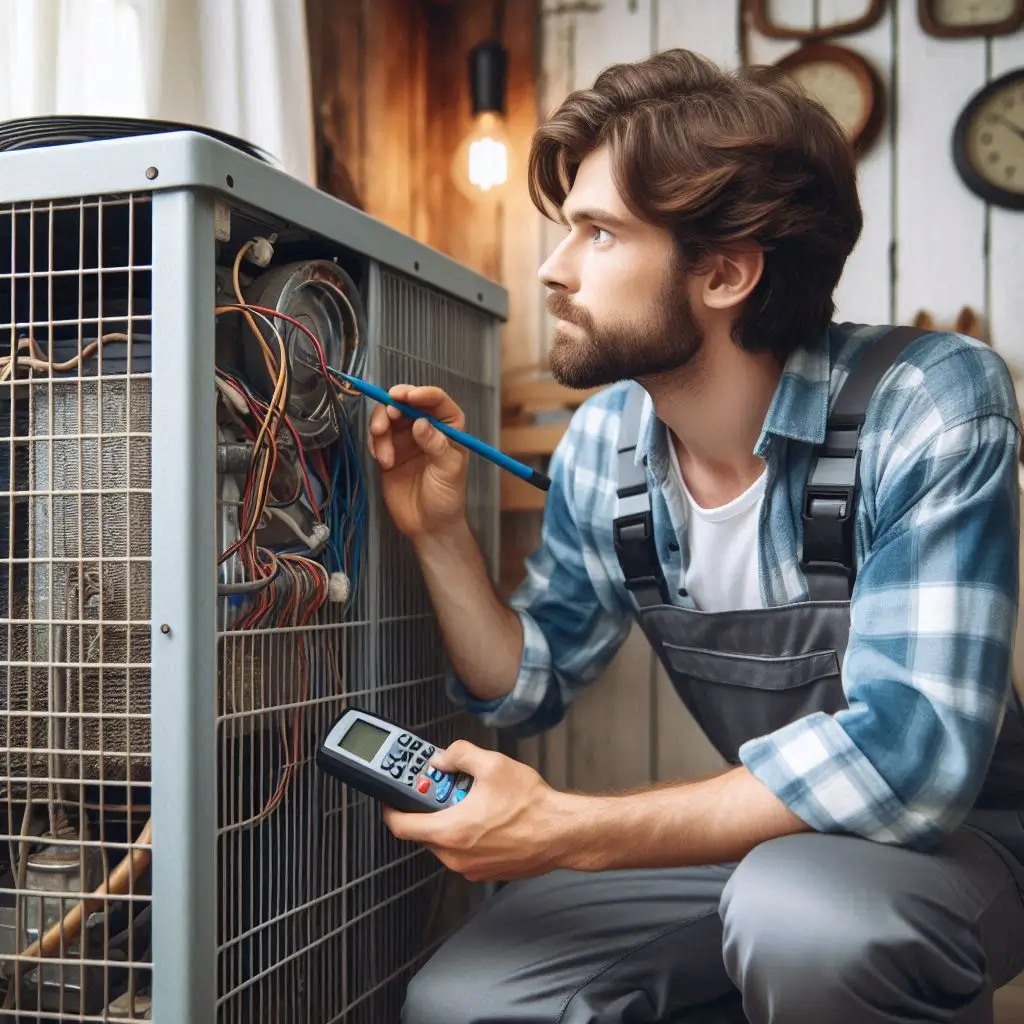
Signs You Need an HVAC Replacement
A failing HVAC system can disrupt home comfort and spike energy bills. Understanding the warning signs can help homeowners decide when a replacement is necessary.
Frequent Repairs and High Maintenance Costs
An HVAC system requiring constant repairs is a clear indicator that it’s nearing the end of its lifespan. While minor fixes are expected, frequent breakdowns suggest that critical components are failing. The cost of repeated repairs can quickly add up, making a full replacement a more cost-effective solution.
When Repair Costs Outweigh Replacement Benefits:
- If the cost of repairs exceeds 50% of the price of a new system, replacement is the smarter investment.
- Aging HVAC systems (10–15 years old) tend to have more mechanical failures, increasing service calls and expenses.
- A failing compressor or refrigerant leaks in older models often signal that a complete system overhaul is required.
Pro Tip: Instead of continuously investing in temporary fixes, upgrading to a modern energy-efficient HVAC system will improve performance and reduce long-term costs.

Inefficient Heating and Cooling
Another major sign that your HVAC system needs replacement is inconsistent indoor temperatures. If some rooms feel too hot while others remain cold, your system is struggling to distribute air evenly.
Why an Inefficient HVAC System Increases Energy Bills:
- Older systems lose efficiency over time, requiring more energy to heat or cool your home.
- Leaky ducts or clogged filters reduce airflow, making your HVAC unit work harder.
- Low refrigerant levels or failing blower motors can cause inconsistent temperatures, leading to discomfort.
How a New HVAC System Solves These Issues:
- Modern zoned HVAC systems allow precise temperature control in different rooms.
- Higher SEER-rated units use advanced technology to optimize performance and lower electricity usage.
- Smart thermostats help regulate indoor climate efficiently, reducing strain on the system.
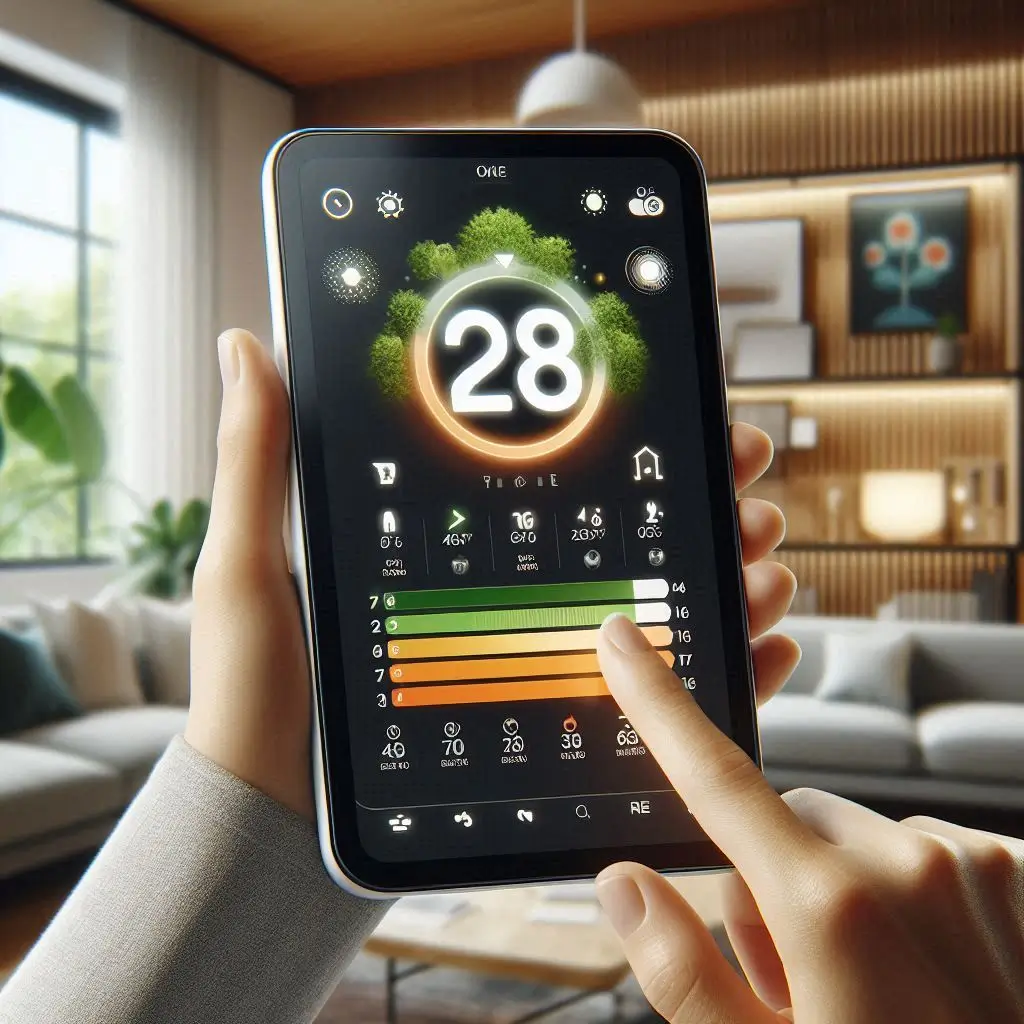
Choosing the Right HVAC System for Your Home
Selecting the right HVAC system is crucial for maintaining year-round comfort, optimizing energy efficiency, and reducing long-term costs. With several options available, homeowners need to consider factors like home size, climate, budget, and efficiency ratings before making a decision. This guide will help you understand different HVAC system types and key considerations to ensure you invest in the best solution for your needs.
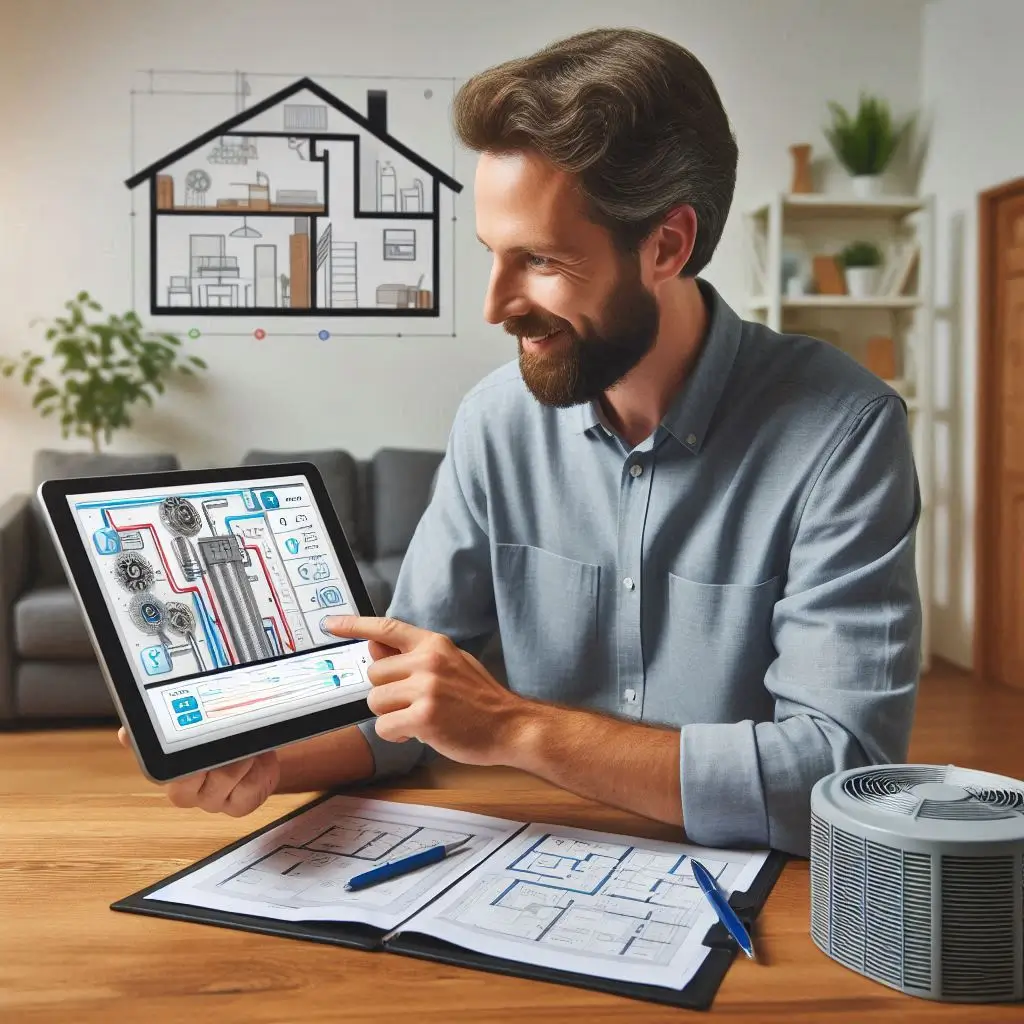
Types of HVAC Systems
Understanding the different types of HVAC systems can help homeowners choose the best option based on energy efficiency, installation costs, and performance. Below are some of the most common choices:
Central Air Conditioning vs. Ductless Mini-Splits
Central Air Conditioning Systems
Central AC is one of the most popular cooling solutions for residential properties, using ductwork to distribute conditioned air throughout the home.
- Best for: Large homes with existing ductwork.
- Pros: Efficient cooling for the entire house, improved air filtration, and compatibility with smart thermostats.
- Cons: Requires duct installation if not already present, higher upfront cost, and potential energy loss through ducts.
Ductless Mini-Split Systems
Mini-splits provide zoned cooling without the need for ductwork. They consist of an outdoor compressor unit and one or more indoor air handlers.
- Best for: Homes without ductwork, room additions, or spaces needing individual temperature control.
- Pros: Higher energy efficiency, independent temperature control for each room, and easy installation.
- Cons: Higher initial cost per unit compared to window ACs, but lower long-term operational costs.
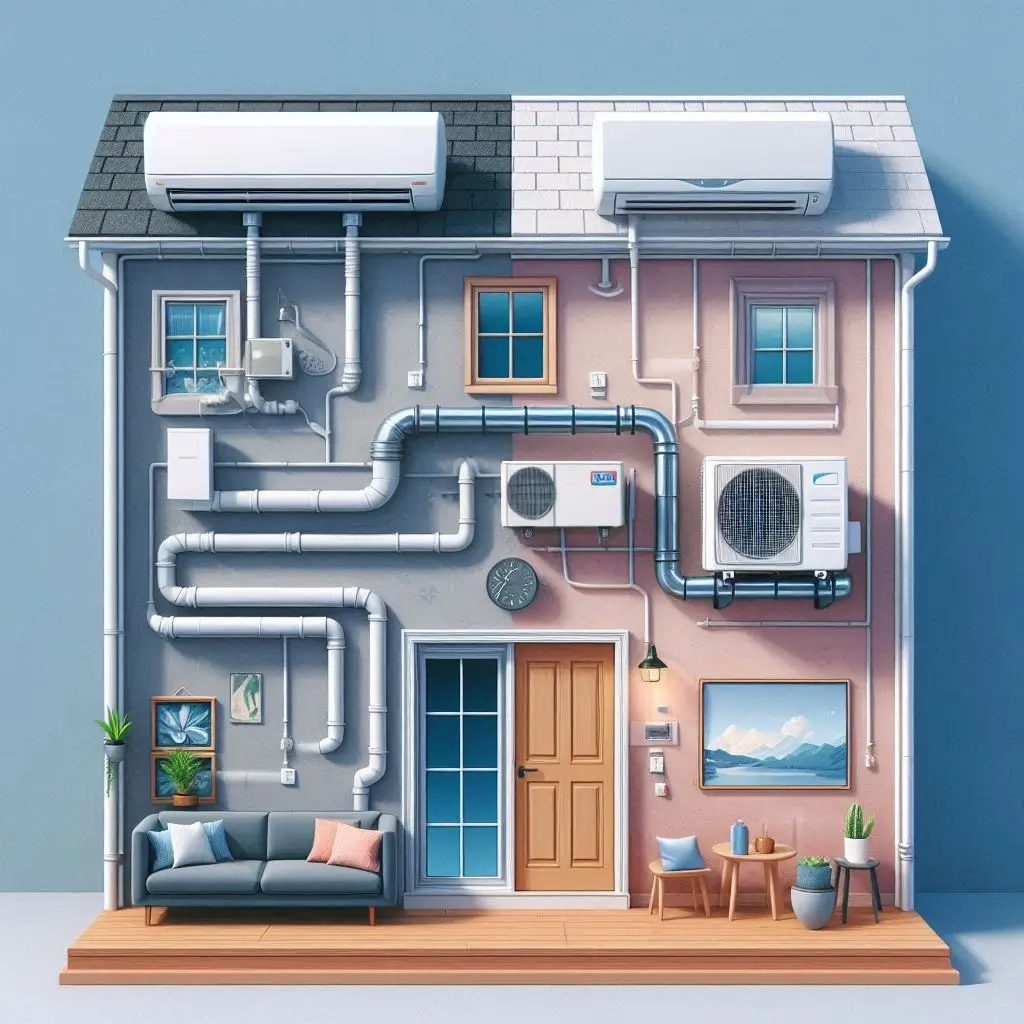
Heat Pumps and Energy-Efficient Options
Heat Pumps
A heat pump is a versatile system that provides both heating and cooling by transferring heat between the indoor and outdoor environment.
- Best for: Homes in moderate climates with hot summers and mild winters.
- Pros: Energy-efficient alternative to traditional furnaces and air conditioners, reduces carbon footprint, and can lower utility bills.
- Cons: May require a backup heating source in extremely cold climates.
High-Efficiency HVAC Systems
Modern energy-efficient HVAC systems come with high SEER (Seasonal Energy Efficiency Ratio) ratings, ensuring lower energy consumption while providing optimal performance.
- Features to look for: Variable-speed compressors, smart thermostat compatibility, and ENERGY STAR certification.
- Benefits: Reduced energy bills, improved indoor air quality, and lower environmental impact.
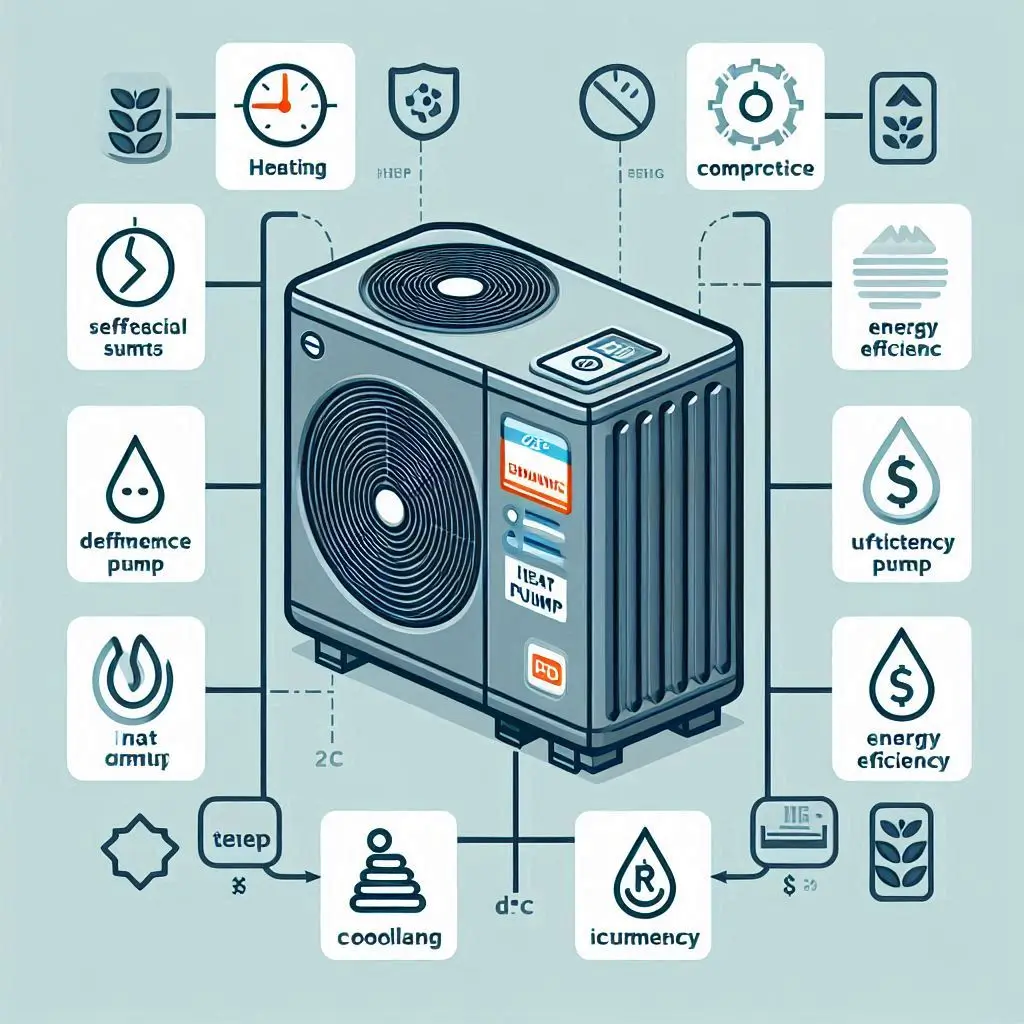
Factors to Consider When Selecting a New System
Choosing an HVAC system requires more than just picking a model. Here are critical factors to consider before making your investment:
Home Size, Climate, and Budget
- Home Size: The size of your home determines the capacity required for efficient heating and cooling. A system that is too small will struggle to maintain temperatures, while an oversized unit will lead to energy wastage.
- Climate: If you live in an area with extreme heat or cold, a high-efficiency system or a heat pump may be the best option.
- Budget: While high-efficiency systems may have a higher upfront cost, they provide long-term savings on energy bills and maintenance.
Importance of SEER Ratings and Energy Efficiency
- SEER Rating: The Seasonal Energy Efficiency Ratio (SEER) measures how efficiently an HVAC system operates. The higher the SEER rating, the more energy-efficient the unit is.
- Energy Star Certification: Systems with Energy Star ratings meet strict energy efficiency standards, helping homeowners save on utility bills.
- Variable-Speed Technology: HVAC units with variable-speed compressors adjust airflow based on temperature needs, improving efficiency and comfort.
Cost of HVAC Replacement Near Me
Replacing an HVAC system is a significant investment that ensures better energy efficiency, improved indoor comfort, and lower long-term maintenance costs. The overall HVAC replacement cost depends on various factors, including unit size, installation complexity, brand choice, and available financing or rebates. Understanding these cost elements will help homeowners make informed decisions while balancing performance and budget.

Factors Affecting HVAC Replacement Costs
The total cost of HVAC replacement varies based on several factors, including equipment type, labor costs, and optional upgrades. Below are the primary aspects that influence the final price:
Unit Size and Capacity
- The size of the HVAC system, measured in BTUs (British Thermal Units), plays a critical role in determining the cost.
- Larger homes require higher-capacity units, which typically cost more but provide better climate control.
- A properly sized unit ensures energy efficiency while preventing excessive wear and tear.
Installation Complexity
- Ductwork Modifications: If your existing ductwork is outdated or requires adjustments, it can increase installation costs.
- Accessibility Issues: Installing an HVAC system in tight spaces like attics or basements may require additional labor.
- Permits and Regulations: Some regions require specific permits and inspections, adding to the total cost.

Additional Upgrades and Smart Features
- Smart Thermostats: Many homeowners opt for programmable or Wi-Fi-enabled thermostats to enhance efficiency.
- Energy-Efficient Filters: Advanced filtration systems improve indoor air quality but may add to the initial cost.
- Zoned HVAC Systems: Customizing temperature control for different areas of the home increases comfort but also raises expenses.
H3: Brand Comparison and Long-Term Energy Savings
The cost of HVAC replacement varies significantly across brands, with premium brands offering better warranties, durability, and efficiency. Below is a general comparison:
| Brand | Price Range | SEER Rating | Warranty |
|---|---|---|---|
| Carrier | $$$ | 16-20 SEER | 10-15 Years |
| Trane | $$$$ | 16-22 SEER | 10-15 Years |
| Lennox | $$$$ | 17-26 SEER | 10-15 Years |
| Goodman | $$ | 14-18 SEER | 10 Years |
| Rheem | $$ | 15-20 SEER | 10 Years |
- Higher SEER-rated systems reduce long-term energy consumption, leading to lower utility bills.
- Investing in top-rated brands ensures better performance and fewer repairs over time.
Financing and Rebates for HVAC Installation
Many homeowners hesitate to replace their HVAC system due to high upfront costs. However, several financing options and rebates can make the investment more affordable.
Available Financing Options for HVAC Replacement
- HVAC Company Financing: Many HVAC contractors offer in-house financing with flexible payment plans.
- Home Improvement Loans: Banks and credit unions provide low-interest loans for energy-efficient upgrades.
- Credit Card Plans: Some homeowners opt for 0% interest credit card promotions to cover upfront expenses.
Local Rebates and Tax Credits for Energy-Efficient Systems
- Utility Company Rebates: Local energy providers often offer rebates for installing high-efficiency HVAC systems.
- Federal Tax Credits: The Inflation Reduction Act provides tax credits for systems meeting ENERGY STAR standards.
- State Incentives: Some states offer additional tax deductions for eco-friendly home upgrades.

Finding the Best HVAC Replacement Services Near Me
Choosing the right HVAC replacement service is crucial for ensuring quality installation, long-term efficiency, and reliable performance. A well-installed system not only enhances home comfort but also helps reduce energy costs and extends the lifespan of your unit. However, with multiple service providers available, it’s essential to evaluate contractors carefully. This guide will help you understand what to look for in HVAC professionals to ensure you get the best service for your investment.
Checking Credentials and Certifications
When searching for an HVAC replacement service, the first step is verifying credentials. Hiring a licensed, insured, and certified contractor ensures compliance with industry standards and protects homeowners from potential liabilities.
Why Licensed and Insured Contractors Matter
- State Licensing Requirements: Every reputable HVAC contractor must hold a valid state license to perform HVAC installations. Licensing requirements ensure technicians have the necessary skills and training.
- Insurance Protection: A reliable contractor carries liability insurance and workers’ compensation to protect homeowners in case of accidents or damages during installation.
- Warranty Compliance: Most HVAC manufacturers require licensed professionals to install systems for the warranty to remain valid.
Industry Certifications Like NATE and EPA
Apart from licensing, professional certifications further validate an HVAC contractor’s expertise:
- NATE Certification (North American Technician Excellence): This is the most recognized certification for HVAC technicians, ensuring they meet national industry standards.
- EPA Certification (Environmental Protection Agency): This certification is necessary for handling refrigerants safely and complying with environmental regulations.
- Factory Certifications: Some contractors receive direct training and certifications from leading HVAC brands, such as Carrier, Trane, or Lennox.

Reading Reviews and Getting Multiple Quotes
Beyond certifications, customer reviews and price comparisons are key factors in finding the best HVAC replacement service. A reliable contractor should have a strong reputation backed by positive customer feedback.
The Importance of Customer Testimonials and Referrals
- Online Reviews: Checking platforms like Google Reviews, Yelp, and Better Business Bureau (BBB) helps assess a contractor’s reputation.
- Social Proof: Look for feedback on quality of service, professionalism, and response time from previous customers.
- Referrals from Friends and Family: Personal recommendations provide trustworthy insights into a contractor’s reliability and customer service.

Comparing Service Providers for the Best Value
- Request Multiple Quotes: Obtain at least three different estimates from reputable HVAC contractors to compare pricing, warranties, and service offerings.
- Check for Hidden Costs: Ask about additional fees such as permits, ductwork modifications, and post-installation maintenance.
- Warranty and Service Agreements: A top-tier contractor offers a strong warranty on parts and labor, ensuring long-term protection and peace of mind.
HVAC Replacement Process – What to Expect
Replacing your HVAC system is a major investment that ensures improved energy efficiency, better indoor air quality, and long-term cost savings. However, the process involves several important steps, from pre-installation inspection to post-installation maintenance. Understanding these steps will help you prepare for a smooth and hassle-free HVAC replacement.
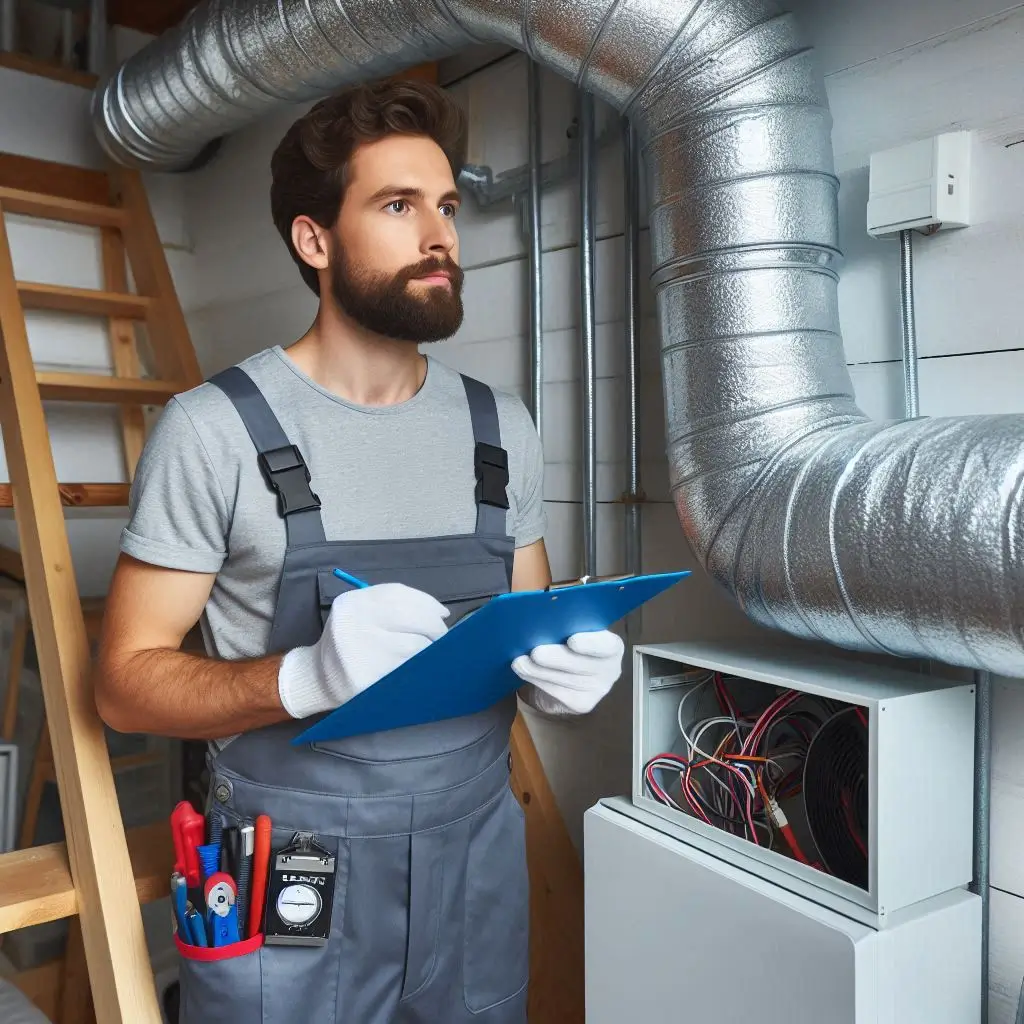
Pre-Installation Inspection and Assessment
Before installing a new HVAC system, a professional assessment is essential. This step ensures that the new unit is properly sized, compatible with your home, and optimized for maximum efficiency.
How Professionals Evaluate Your Home’s Needs
A thorough inspection helps determine the best HVAC system for your specific requirements. Here’s what technicians assess:
- Home Size and Layout: The square footage, ceiling height, and insulation levels affect heating and cooling efficiency. An HVAC system that is too large or too small can lead to inefficient operation and higher energy bills.
- Climate Considerations: Homes in hot and humid areas may require a system with a higher SEER rating, while those in colder climates may need high-efficiency heating capabilities.
- Energy Efficiency Goals: If you’re upgrading to a more energy-efficient unit, the contractor will recommend options that provide long-term savings on utility bills.
Checking Ductwork and Electrical Systems
The efficiency of your HVAC system also depends on the condition of existing components:
- Ductwork Inspection:
- Technicians check for leaks, blockages, and insulation issues to ensure optimal airflow.
- Damaged or inefficient ducts may need repairs or replacement to improve efficiency.
- Electrical System Compatibility:
- Newer HVAC units may require electrical upgrades, including a dedicated circuit or voltage adjustments.
- Older homes may need rewiring or panel upgrades to support modern HVAC systems.
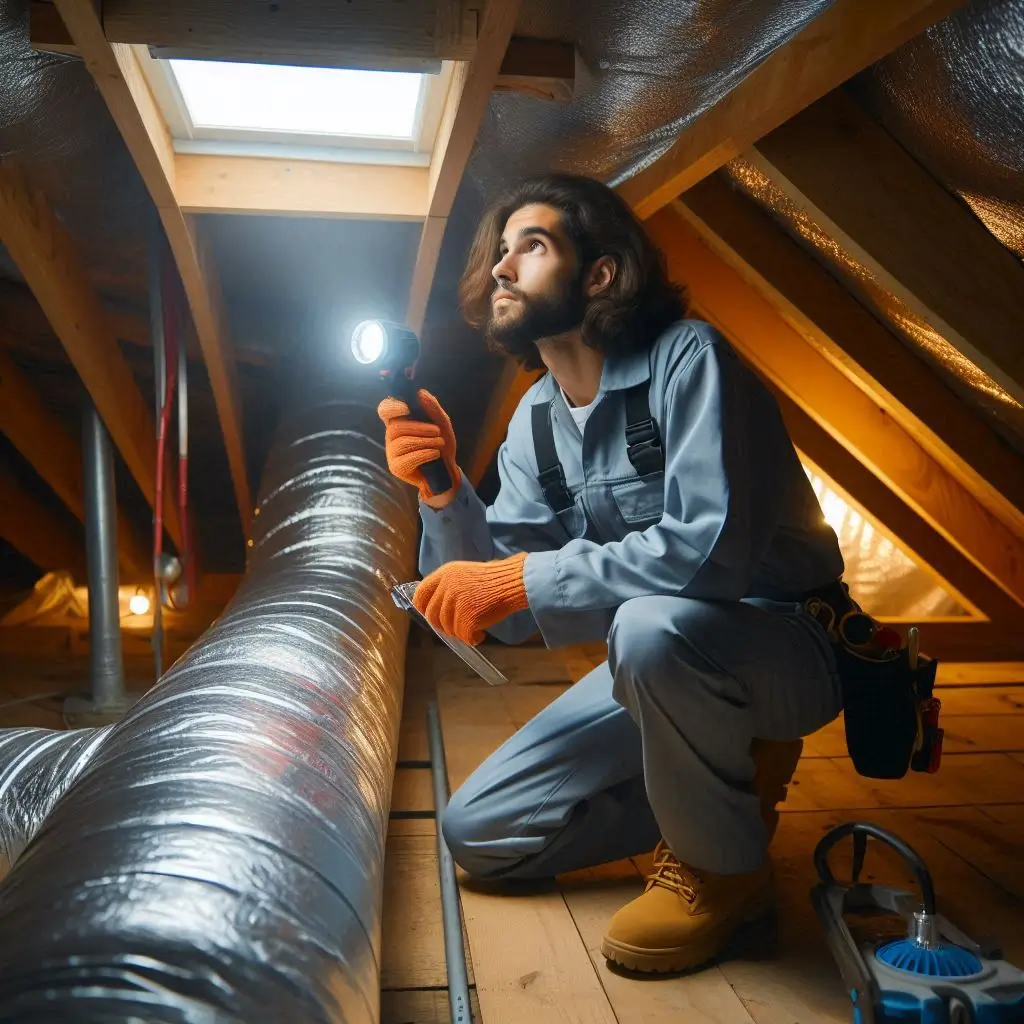
Installation and Post-Installation Maintenance
Once the pre-installation assessment is complete, the actual HVAC replacement process begins. A well-planned installation ensures that the system operates at peak performance.
Step-by-Step Overview of HVAC Replacement
-
Old System Removal
- The existing HVAC unit is carefully disconnected and removed.
- Technicians properly dispose of refrigerants, following EPA regulations.
-
New System Installation
- The new unit is positioned and securely connected to ductwork, electrical lines, and refrigerant lines.
- Thermostat and control settings are adjusted for optimal performance.
-
System Testing and Calibration
- The HVAC unit is tested to ensure proper airflow, temperature regulation, and efficiency.
- Smart thermostats, zoning systems, and other features are configured.
-
Final Inspection and Homeowner Walkthrough
- The contractor explains system operation, warranty coverage, and maintenance tips.
- Homeowners receive a detailed guide on troubleshooting and energy-saving tips.
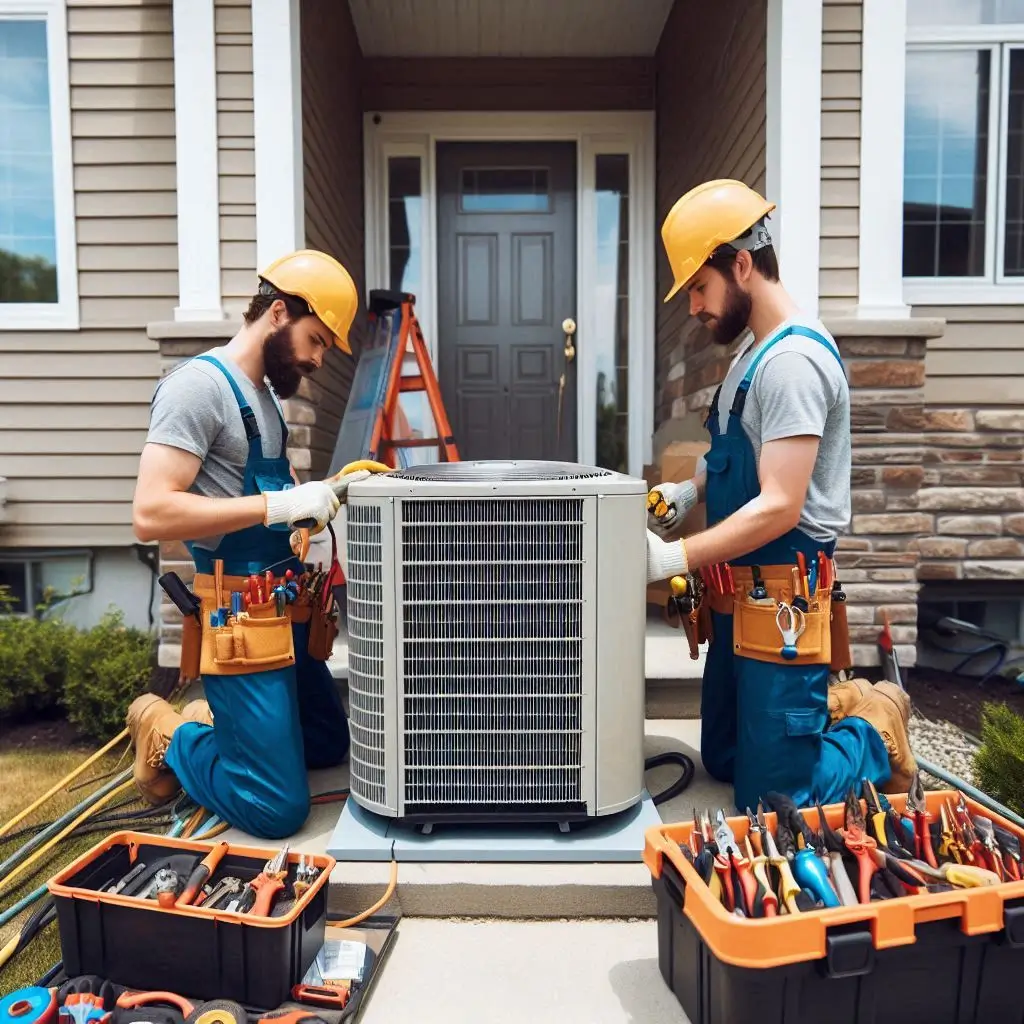
Importance of Maintenance for Long-Term Efficiency
Regular HVAC maintenance extends the lifespan of your system and ensures consistent performance. Key maintenance tasks include:
- Filter Replacements: Changing air filters every 1-3 months to prevent dust buildup and improve airflow.
- Seasonal Tune-Ups: Scheduling professional maintenance in spring (for AC) and fall (for heating) to keep the system running efficiently.
- Duct and Vent Cleaning: Ensuring air ducts are free from dust, debris, and mold for better indoor air quality.
- Checking Refrigerant Levels: Low refrigerant levels can lead to inefficient cooling and potential system damage.
By following a proactive maintenance schedule, homeowners can reduce repair costs and improve overall HVAC performance.
FAQs About HVAC Replacement Near Me
When considering an HVAC replacement, homeowners often have several important questions regarding costs, installation, and system efficiency. Here, we answer the most frequently asked questions to help you make an informed decision.
How Do I Know If I Need an HVAC Replacement?
Several signs indicate it’s time to replace your HVAC system:
- Frequent Repairs: If your unit requires constant repairs, replacement may be more cost-effective.
- Rising Energy Bills: Older systems lose efficiency, causing higher energy consumption.
- Uneven Cooling or Heating: If some rooms are too hot or cold, your system may be failing.
- System Age: Most HVAC systems last 10-15 years before efficiency declines.
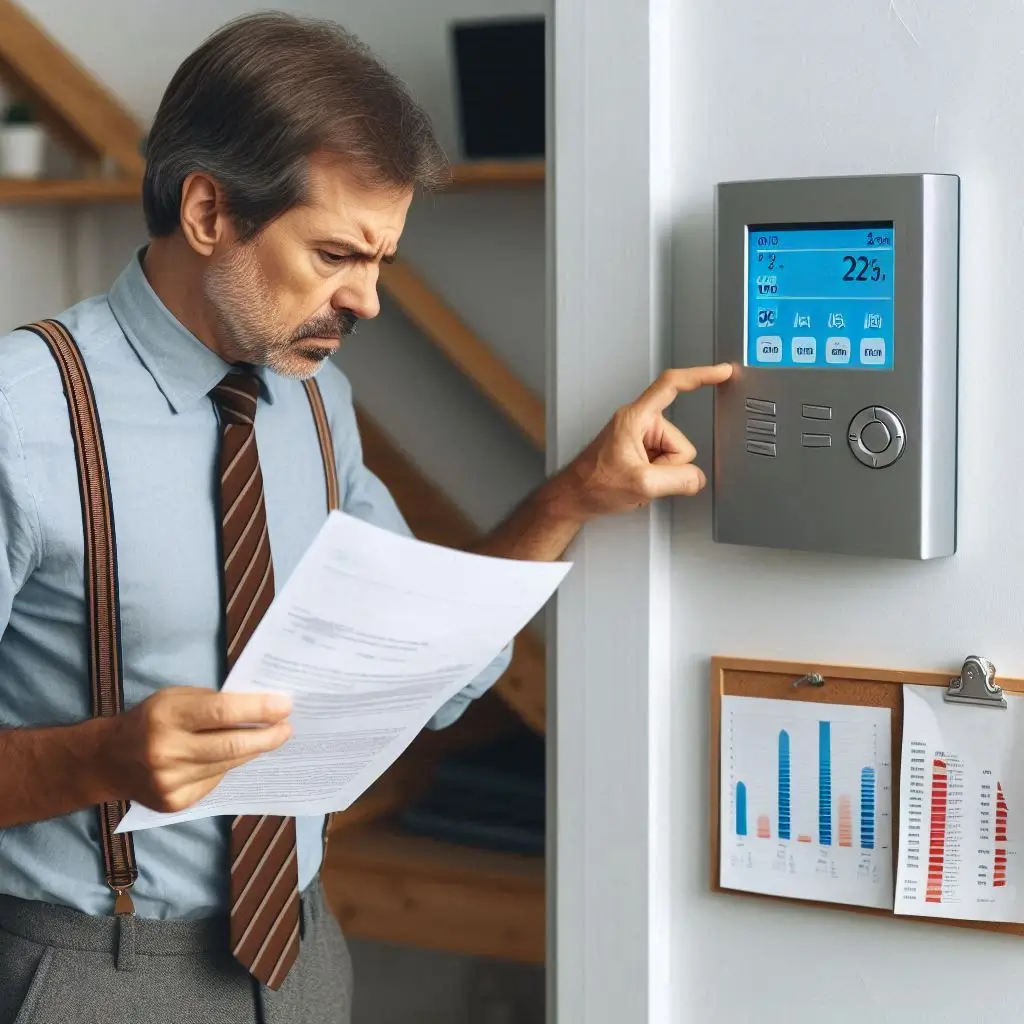
What Is the Average Cost of HVAC Replacement?
The cost of replacing an HVAC system varies based on:
- System Type: Central AC units cost between $3,000–$7,000, while heat pumps may range from $5,000–$10,000.
- Home Size: Larger homes require higher capacity units, increasing costs.
- Installation Complexity: If ductwork needs modifications, costs rise.
- Energy Efficiency Ratings: High SEER-rated systems cost more initially but save on energy bills.
Pro Tip: Check for local rebates and tax credits to reduce the overall cost.
How Long Does HVAC Replacement Take?
The installation process typically takes 1–2 days, depending on:
- Old System Removal: Disconnecting and removing the existing unit.
- Ductwork Modifications: If necessary, adjustments add time.
- System Testing and Calibration: Ensuring the unit runs efficiently.
For complex installations, it may take up to 3 days, especially if electrical upgrades are needed.
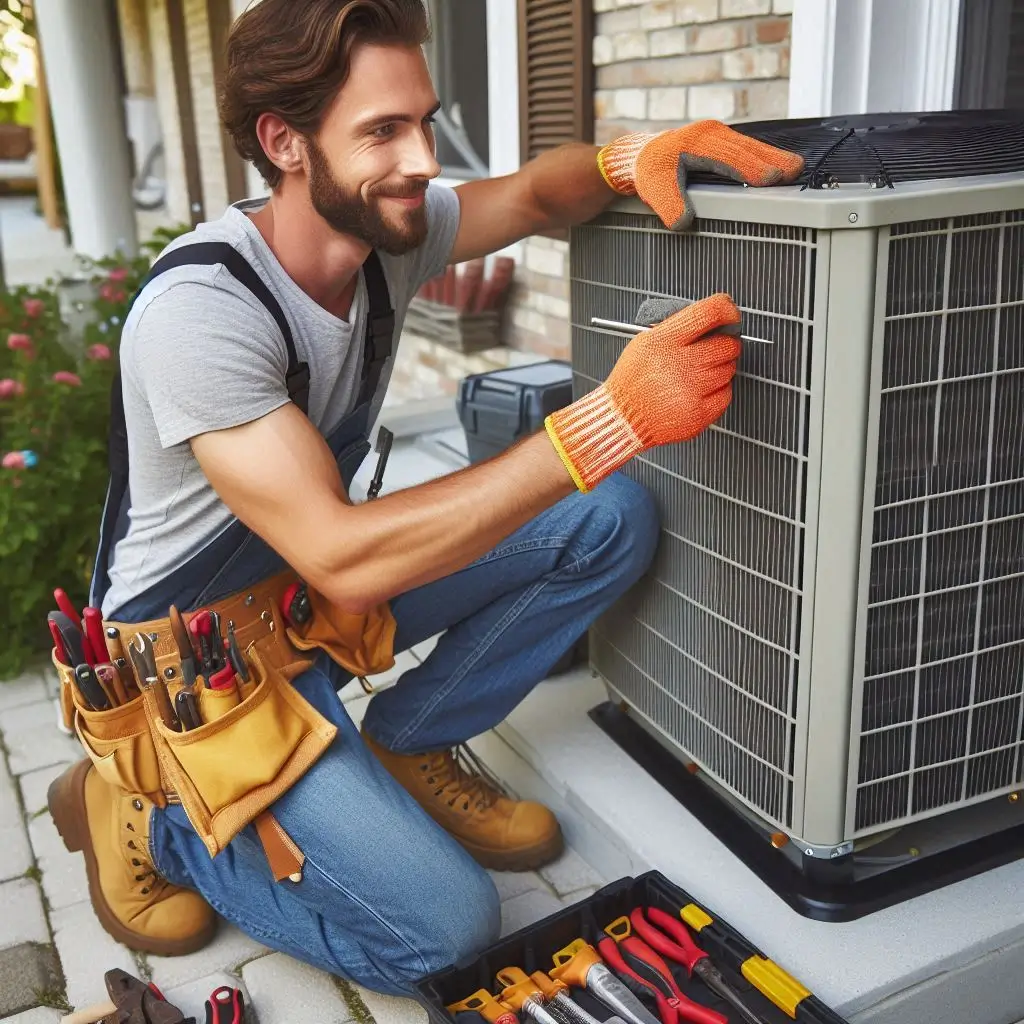
Can I Replace My HVAC System Myself?
No. HVAC replacement requires professional expertise due to:
- Electrical and Refrigerant Handling: Only certified technicians can manage refrigerant lines and wiring.
- System Sizing and Installation: Incorrect installation leads to inefficiency, higher costs, and voided warranties.
- Safety Concerns: Improper handling may cause gas leaks or fire hazards.
Always hire a licensed HVAC contractor to ensure safe and efficient installation.
What Should I Look for in an HVAC Contractor?
When choosing an HVAC replacement service, consider:
- Certifications: Look for NATE, EPA, or state licenses.
- Experience: Choose a contractor with at least 5+ years in HVAC installation.
- Customer Reviews: Check Google, Yelp, and BBB ratings.
- Warranty Offers: A reliable contractor provides warranty coverage on installation and equipment.
Getting multiple quotes helps compare prices and service quality.
Conclusion
Replacing your HVAC system is a significant investment that improves your home’s comfort, energy efficiency, and indoor air quality. Recognizing the signs of a failing system, choosing the right HVAC unit, understanding replacement costs, and hiring a licensed professional are all key factors in making a smart decision. By researching local HVAC replacement services, comparing quotes, and taking advantage of rebates and financing options, you can ensure a smooth and cost-effective installation. Prioritizing regular maintenance will also extend the lifespan of your new system, keeping your home comfortable for years to come. If you’re searching for “HVAC replacement near me,” reach out to a trusted local HVAC contractor today to get started on upgrading your home’s heating and cooling system.

